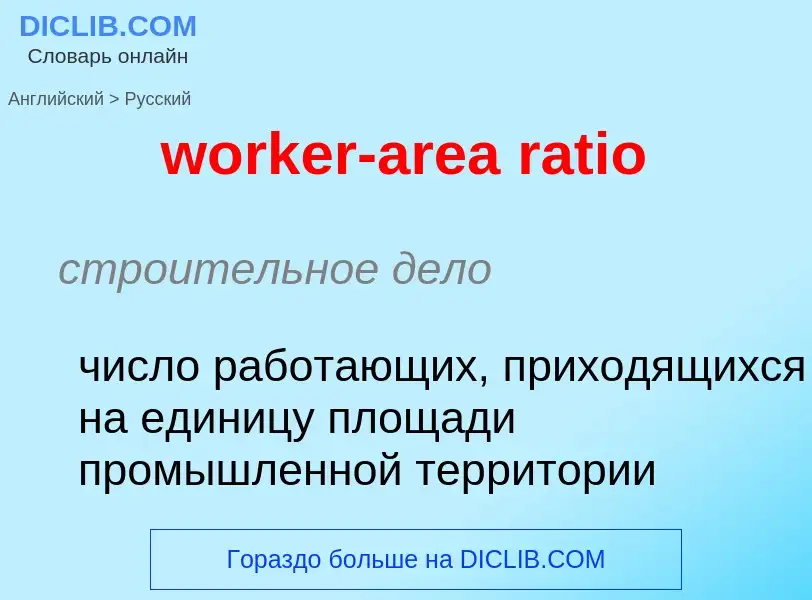Перевод и анализ слов искусственным интеллектом ChatGPT
На этой странице Вы можете получить подробный анализ слова или словосочетания, произведенный с помощью лучшей на сегодняшний день технологии искусственного интеллекта:
- как употребляется слово
- частота употребления
- используется оно чаще в устной или письменной речи
- варианты перевода слова
- примеры употребления (несколько фраз с переводом)
- этимология
worker-area ratio - перевод на русский
строительное дело
число работающих, приходящихся на единицу площади промышленной территории
строительное дело
коэффициент полезной площади застройки
общая лексика
процент застройки
строительное дело
соотношение всей площади здания к площади занимаемого земельного участка
математика
двоеточие
знак деления
знак отношения
Википедия
The surface-area-to-volume ratio (surface-to-volume ratio, denoted as sa/vol, SA/V or SA:V, is the amount of surface area per unit volume of an object or collection of objects.
SA:V is an important concept in science and engineering. It is used to explain the relation between structure and function in processes occurring through the surface and the volume. Good examples for such processes are processes governed by the heat equation, that is, diffusion and heat transfer by thermal conduction. SA:V is used to explain the diffusion of small molecules, like oxygen and carbon dioxide between air, blood and cells, water loss by animals, bacterial morphogenesis, organism's thermoregulation, design of artificial bone tissue, artificial lungs and many more biological and biotechnological structures. For more examples see Glazier.
The relation between SA:V and diffusion or heat conduction rate is explained from flux and surface perspective, focusing on the surface of a body as the place where diffusion, or heat conduction, takes place, i.e., the larger the SA:V there is more surface area per unit volume through which material can diffuse, therefore, the diffusion or heat conduction, will be faster. Similar explanation appears in the literature: "Small size implies a large ratio of surface area to volume, thereby helping to maximize the uptake of nutrients across the plasma membrane", and elsewhere.
For a given volume, the object with the smallest surface area (and therefore with the smallest SA:V) is a ball, a consequence of the isoperimetric inequality in 3 dimensions. By contrast, objects with acute-angled spikes will have very large surface area for a given volume.




![Cells]] lining the [[small intestine]] increase the surface area over which they can absorb nutrients with a carpet of tuftlike [[microvilli]]. Cells]] lining the [[small intestine]] increase the surface area over which they can absorb nutrients with a carpet of tuftlike [[microvilli]].](https://commons.wikimedia.org/wiki/Special:FilePath/Human jejunum microvilli 2 - TEM.jpg?width=200)






